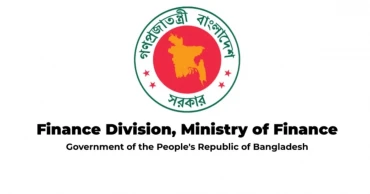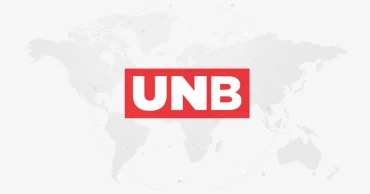public services
Govt has no complete list of public services against which it levies fees or charges: Finance Ministry document
The government of Bangladesh has no complete list of public services against which it levies fees or charges.
“There are thousands of public services against which the government levies fees or charges, but there is no complete list of such fees and charges and when those were imposed,” according to an official document of the Finance Ministry.
According the official document titled ‘Medium Term Macroeconomic Policy Statement (2023-24 to 2025-26)’ of the Finance Division of the Finance Ministry, the government has partially set up an online database of all non tax revenue (NTR) items with the fees, charges or prices and their dates of imposition.
“This partial database has opened scope with the hope of increasing NTR income manifolds from administrative fees,” it said.
On the other hand, the government is not only focusing on enhanced revenue mobilisation from NTR by raising fees or charges, but also putting its best effort to ensure efficient and satisfactory service delivery.
Take the country forward foiling conspiracies: PM Hasina urges in Independence Day speech
The government has taken numerous initiatives to make service delivery systems paperless and to minimise human deployment in this system. This is one of the key features to building Smart Bangladesh by 2041, the document said.
The government has multiplied public investment during the last one and a half decade, of which the SOEs/Autonomous Bodies (ABs) have enjoyed capital support either in the form of loans or equities.
Loans are registered under government accounts through Subsidiary Loan Agreements (SLAs) and thereby interest is charged.
“However, there is no consolidated database for equity investments of the government and therefore there is no precise estimate for dividend income,” the official document said.
The government has taken the initiative to create an exhaustive database for equity investments in the SOEs/ABs as well as establish a Financial Reporting Council for setting standard financial statements to ensure proper assessment of these organisations.
According to the ‘Medium Term Macroeconomic Policy Statement (2023-24 to 2025-26)’, With the economic advancement of the country the scope and volumes of public services have evolved and expanded.
Read more NBR’s three-pronged strategy to boost revenue collection
Government organisations are engaged in delivering various new services in new forms to the public.
The government has taken initiatives to explore such novel and voluminous services against which fees/charges may be collected through organising stakeholders’ consultation workshops, seminars, etc.
As per the Medium Term Macroeconomic Policy Statement (2023-24 to 2025-26) of the Finance Division, some Tk 5343 billion will come from tax revenue sector in the 2024-25 fiscal year and Tk 6463 billion in 2025-26 fiscal year.
In the next two fiscal years, the National Board of Revenue (NBR) will provide Tk 5095 billion and Tk 6171 billion.
From the Income Tax wing, the collection will be Tk 1753 billion for the next fiscal while Tk 2123 billion for 2025-26 fiscal, and the collection from import duties will be Tk 1511 billion and Tk 1830 billion respectively.
From the VAT and supplementary Duties, the revenue collection will be Tk 1831 billion and Tk 2218 billion respectively.
The non-NBR tax for the 2024-25 fiscal and 2025-26 fiscal will be Tk 248 billion and Tk 292 billion respectively with non-tax revenue collection will be Tk 529 billion and Tk 634 billion respectively.
The target for running 2023-24 fiscal is Tk 5000 billion with Tk 4500 billion from tax revenue. Of the total amount, Tk 4300 billion will come from NBR through Tk 1480 billion from income tax, Tk 1275 billion from import duties, Tk 1545 billion from VAT and supplementary duties. Some Tk 200 billion will be collected from the non-NBR sector while Tk 500 billion from the non-tax revenue sector.
Young entrepreneurs must step up to break the hold of syndicates: DG of Consumer Rights
1 year ago
Tk6 trillion budget in the works for 2021-22; govt eyes increased outlay on capital expenditure
The government allocation for public expenditure on goods and services will witness a significant rise in the coming years after a slight dip in the last couple of years.
The government has estimated to spend Tk 401.3 billion, which is 6.6% of the budget, for public expenditure in the coming 2021-22 fiscal.
The country is likely to get Tk 5933.14 billion budget for 2021-22 fiscal, Tk 253.14 billion higher than the running one, aiming to face the COVID-19 pandemic challenge for recovering the economy.
Read BSMMU announces Tk 602.73cr budget for FY 2020-21
The estimation for 2022-23 fiscal has been set at Tk 465.2 billion, which will be 6.7% of the budget.
According to an official document, the allocation for the purpose in the running 2020-21 fiscal is Tk 350 billion or 6.1% of the budget.
The document also reads that the government has estimated to bring down its expenditure in current account, including purchase of product and service, while increase the capital expenditure in the next two fiscals.
It said that the current expenditure for 2021-22 and 2022-23 fiscal has been estimated at 54.4% and 54.5% of the total budget respectively.
Also read: Spending on public servants' remuneration to witness uptick from next fiscal
As per the document, the government allocation for expenditure can be divided in current expenditure and capital expenditure.
Salaries and allowances of government employees, purchase of product and service, compensation and relocation expenses, payment of interest against foreign and domestic loans - these are all found under the current expenditure category. Besides, ‘food accounts’ and ‘expense for structural coordination’ are also under this expenditure.
On the other hand, capital expenditure is spending that leads to the creation of new productive assets and inclusion. It is akin to investment, so government-funded projects and project components in the annual development programme (ADP), as well as non-ADP capital expenditure are the two main categories for capital expenditure.
Also read: Stop unnecessary expenditure of public money: PM
Besides, loans and advance payments, development programmes from revenue budget, projects outside the ADP and non-ADP Food for Work programme and handover expenses fall under this expenditure.
The document stated that in the revised budget for the 2019-20 fiscal, the allocation for public expenditure on products and services was Tk 322.1 billion, that is 6.5% of the budget.
It also mentioned that in 2018-19 fiscal the allocation was Tk 285.7 billion which was 7.3% of the budget that year.
In four previous fiscals i.e. 2017-18, 2016-17, 2015-16 and 2014-15 respectively, the allocations were Tk 234.8 billion (7.3% of budget), Tk 205.49 billion (7.6%), Tk 182.05 billion (7.6%) and Tk 166.27 billion (8%).
Read 'Unimplementable' budget to cause public sufferings: BNP
The document said that from 2014-15 fiscal to 2018-19 fiscal the allocation for public expenditure in product and service was near about 8%.
Due to various government steps, like enhancement of transparency through introducing E-GP, development in public procurement management and others, the allocation for this sector can be delineated in the government budget process, the document said.
Meanwhile, amid the Coronavirus crisis, the government is working according to what it believes to be 'a comprehensive plan' with four main strategies.
The 4-pronged strategy entails discouraging luxury expenditures, prioritising government spending that creates jobs, creating loan facilities through commercial banks at subsidised interest rates for the affected industries and businesses, and finally expanding the coverage of the government’s social safety net programmes.
Read Govt aims to rein in budget deficit back within 5% from next fiscal
4 years ago



